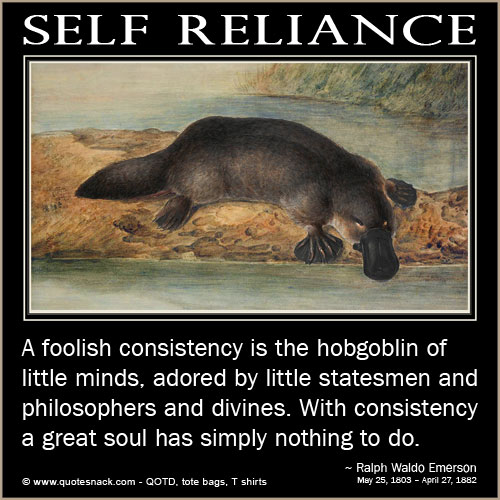This week I’m heading back to “Why have prisons?” This isn’t a rhetorical question, but judging by some of the emails, some respondents either believed I meant it as a rhetorical question or just took it as an opportunity to rant about my being a part of the “rightwing noise machine.” On the other hand, there were a few emails that not only took a shot at answering the question, but also ventured commentary on our criminal justice system from start to finish.
While I was in the military, “C2” or “C Squared,” was a shorthand term used for “Command and Control.” In the criminal justice system we might try “C3” or “C Cubed” as a shorthand term for “Cops, Courts, and Corrections.” One of my oldest friends here in the valley, I’ll call him Mr. Grim, shares a view commonly believed to be widespread in the rightwing ranks. It’s best to quote him directly:
…my personal belief remains to the extent that I think that prisons and the incarceration of law-breakers in said prisons should serve three out of the four reasons you listed as options. Retribution (punishment), deterrence and incapacitation should all be equally valid answers to the “Why have prisons?” question. Rehabilitation is a bonus if it does happen. Hopefully at least some of those guilty of committing crime(s) and are convicted “learn their lesson” so to speak and are effectively “rehabilitated” after serving out the punishment for their crime(s). But we both know that doesn’t happen as often as it should and thus the point that rehabilitation is a bonus. ~Mr. Grim
Part of my reason for posing the question was simple curiosity. The reason for the curiosity is my primary reason for posing the question. My curiosity was aroused by an interesting and important piece of research published by Richard Tewksbury of the University of Louisville, and Elizabeth Ehrhardt Mustaine of the University of Central Florida entitled Correctional Orientations of Prison Staff. Tewksbury and Mustaine split deterrence into two parts: specific deterrence (meaning “to punish each prisoner and discourage him or her from committing crime”) and general deterrence (meaning “to punish prisoners as an example and discourage other people from committing crime”).[1]
The reference link below is to the abstract which I’ll quote in full here, but I believe you must subscribe to the journal in order to access the full research article:
Beliefs about the purpose and goals of incarceration are important determinants of how policy makers and practitioners perceive correctional operations. Drawing on survey data from 554 corrections staff persons in Kentucky, this research explores perceptions of important and primary goals for incarceration and factors influencing the endorsement of 5 correctional ideologies (rehabilitation, retribution, incapacitation, specific deterrence, and general deterrence). Results show that all five ideologies are perceived as somewhat important, with rehabilitation receiving the strongest support. Demographic influences include female staff being more supportive of rehabilitation, administrators and program staff being most supportive of rehabilitation, and security staff providing the strongest support for retribution. [1]
The Closer, a TV show I’ve watched on occasion, had a great line that I’ll quote as closely as I can recall: “If you’re a carpenter, everything looks like a nail.” Clearly, if you work toward rehabilitation your orientation is likely to be supportive of rehabilitation. After reading the entire research article, the abstract is somewhat misleading concerning the stated results. These views, as stated in the title of the research, are all by corrections workers, including the administrative, program, industries, services and security staff. I’d like to find some research that investigates the orientation of you, the general public. As indicated in my post “Why have prisons?” and the research above, “Beliefs about the purpose and goals of incarceration are important determinants of how policy makers and practitioners perceive correctional operations.”[1]
This brings me to the next question: “Should correctional facilities, prisons, penitentiaries, etc., be held accountable for recidivism rates?” Clearly, if you believe the purpose of a prison is for retribution, then holding a facility accountable for recidivism is not sensible. However, if you believe the purpose of prison is rehabilitation, then it is clear that correctional facilities should actually “correct behavior” and reduce recidivism – meaning of course that the system should be held accountable.
This brings me to the Oregon Accountability Model (OAM) and the Mission of the Oregon Department of Corrections (ODOC). The OAM states:
The Oregon Accountability Model encompasses the simultaneous, coordinated and efficient implementation of many Department of Corrections initiatives and projects that provide a foundation for inmates to lead successful lives upon release. ~OAM
This logically leads to the ODOC Mission Statement:
The mission of the Oregon Department of Corrections is to promote public safety by holding offenders accountable for their actions and reducing the risk of future criminal behavior. ~ODOC – Mission, Vision, and Core Values
Oregon, in terms of its Department of Corrections (which of course represents you, the governed), clearly believes that reducing recidivism is of primary importance for its mission. This is in step with the PEW Center on the States’ Executive Summary entitled Ten Steps Corrections Directors Can Take to Strengthen Performance. So finally, the question once again:
“Should correctional facilities, prisons, penitentiaries, etc., be held accountable for recidivism rates?” Whether your answer is “yes” or “no,” please provide at least a brief account of why you believe the answer is yes or no. Please feel free to answer in the comments or email, and if by email, let me know if it’s OK to quote you directly. Thanks!
Cheers all!
[1] Tewksbury, R., and Mustaine, E. E., The Prison Journal 2008; 88; 207, “Correctional Orientations of Prison Staff.”
Like this:
Like Loading...




